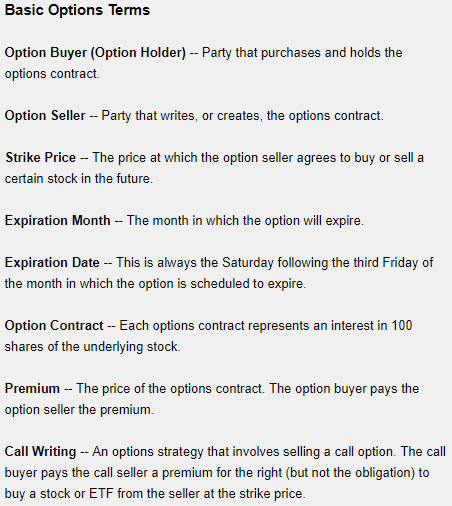Most People Are Dead Wrong About This Strategy…
One of the biggest misconceptions about trading involves the idea of risk.
No matter how you define risk in specific terms, the concept always involves the idea of losses. High risk is associated with a greater-than-average possibility of loss.
And by that definition, selling options could be one of the lowest risk strategies an investor can use.
Don’t believe me? Sound crazy? It’s absolutely true. Let me explain…
Everything You Thought About Options Is Probably Wrong
Options have a reputation for being risky. Investors are often told that “80% of options traders lose money.”
Let me be perfectly clear: In all my years in this business, I’ve never been able to find a report that validates that number.
I think of options as an investment where there will be an equal number of winning and losing positions. This is simply a result of the way options are designed. Whenever an option is bought, someone else must be selling, and one side of the trade will be a winner while the other party will face a loss.
To understand this, let’s go over some basics…
Options give the buyer the right to buy or sell 100 shares of a stock or an ETF at a predetermined price (known as the exercise price) before a specific date. Because they have an expiration date, on that date the option buyer will have either a gain or a loss and the trade is over either way. There are only two possible outcomes, and if the buyer wins, then the options seller must have a loss. Conversely, when the options buyer loses, the seller wins.
Now here’s the key part you need to understand.
Studies (and experience) show that the options buyer does not have a 50/50 chance of winning. They actually have a very high probability of losing. A study done using Chicago Mercantile Exchange (CME) data showed 83% of all options on stock indexes expired worthless.
But remember that there is a winner for every losing options trade. So if the buyer loses on 83% of these options that means the sellers win that often. We can even tilt the odds in our favor slightly more by looking at the different kinds of options — namely, whether call or put selling would be more profitable.
Why Selling Puts Works So Well
 A call option gives the buyer the right to buy the underlying stock and a put option gives the buyer the right to sell the underlying stock. Call buyers profit when prices go up, while put buyers profit when prices decline.
A call option gives the buyer the right to buy the underlying stock and a put option gives the buyer the right to sell the underlying stock. Call buyers profit when prices go up, while put buyers profit when prices decline.
CME data showed that 60% of calls expired worthless while 94% of puts expired worthless.
The data on this is clear: selling puts has a high probability of success. That’s why I focus on selling put options in my premium trading service, Income Trader.
When you sell a put, you will generally sell it at an exercise price that is below the current market price. Unless the price of the underlying stock or ETF falls below the exercise price, the put will expire worthless.
To minimize the risks of put selling, you should only sell put options on stocks or ETFs that you would like to own. For example, if SPDR S&P 500 ETF (NYSE: SPY) is trading at $415 and you would like to buy it on a 10% pullback, you could sell a put at $374 that expires in one to two months. This allows you to earn income while waiting to buy at your desired price. The caveat is that if SPY falls more than 10% you will still have to buy it at $374.
I believe one reason the success rate for put sellers is so high is because the market is dominated by professionals. They know the fair value of the puts they are willing to sell and take trades only when the time is right. Individual investors can easily profit from selling puts just like the professionals, but this strategy requires doing some homework.
An SPY put with an exercise price of $270, for example, will have a higher price than a put with an exercise price of $200, but the higher exercise price is more likely to be exercised. It is usually best to use puts that are at least 10% below the current market price to earn a high amount of income and help ensure you only buy the underlying stock or ETF at a bargain.
Why You Should Consider Trying This
Trading options could be a way to increase your income by hundreds or even thousands of dollars every month, but you need to study the market before making trades. Consider selling put options if you are looking for an income strategy that offers low risk.
Each week since February 2013, I have provided my Income Trader subscribers with a low-risk put selling opportunity. Not to brag too much, but my track record speaks for itself. We’ve achieved a win-rate of 90.2% — allowing readers the chance to pocket around $748 per week, on average.
One of the main reasons for my success is a little-known indicator I created, which gives me an even bigger advantage. Over the years, I’ve successfully applied this tool to my options trading strategy again and again. (My indicator even ended up winning the Charles H. Dow Award, which highlights outstanding research in technical analysis, back in 2015.)
I know that kind of success in what many (wrongfully) consider a “risky” strategy sounds too good to be true… which is why I’m openly sharing my research and results. Check it out to see for yourself.
